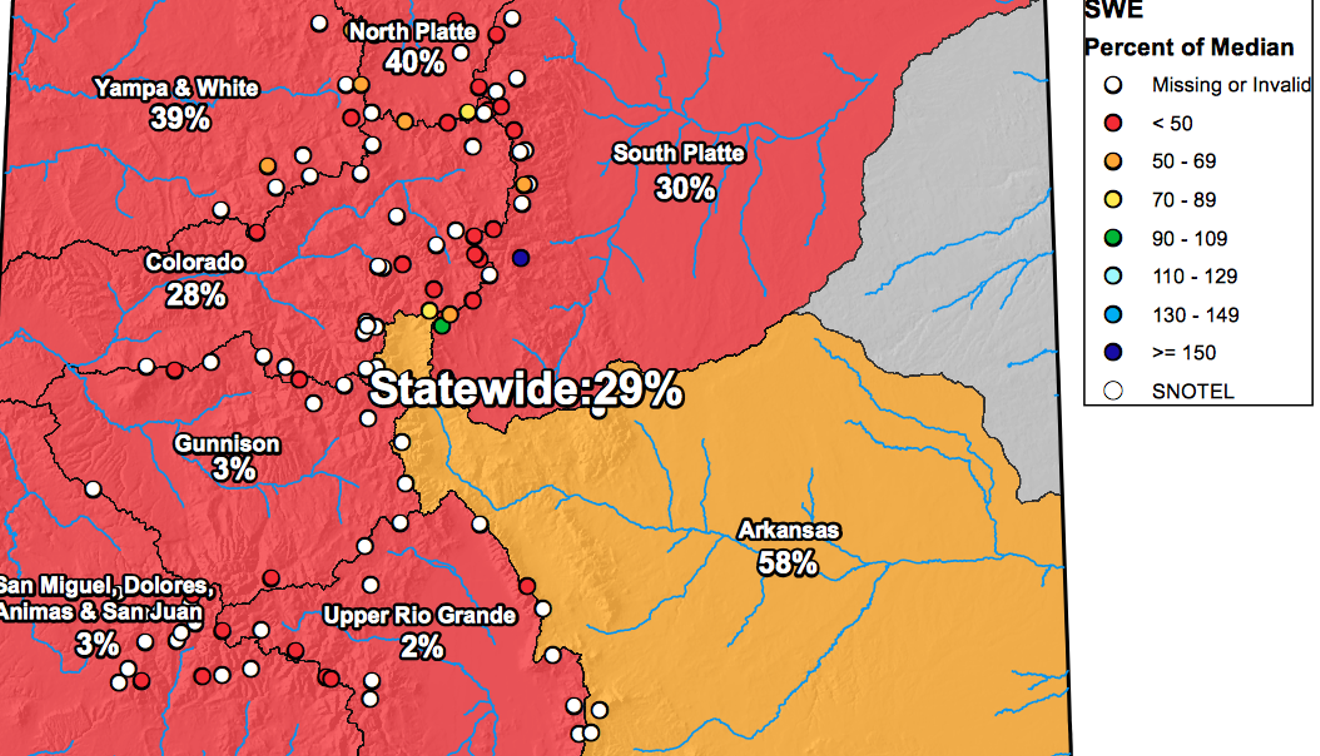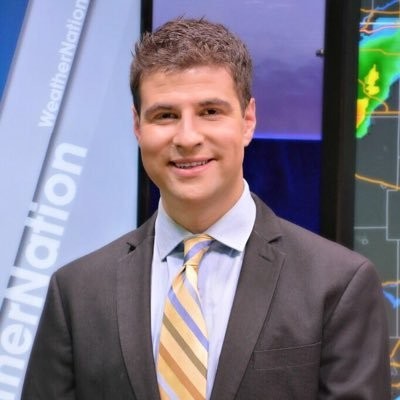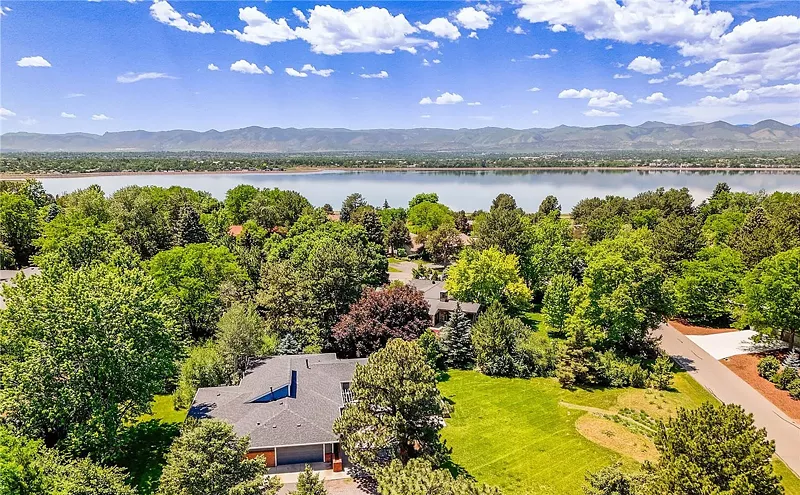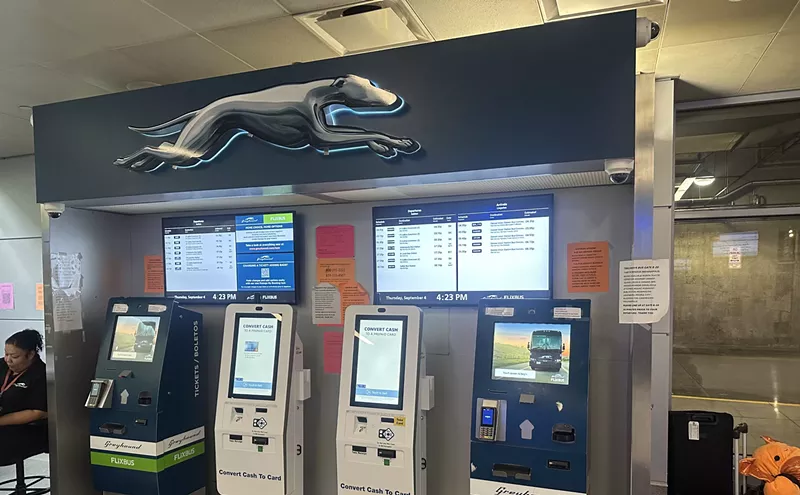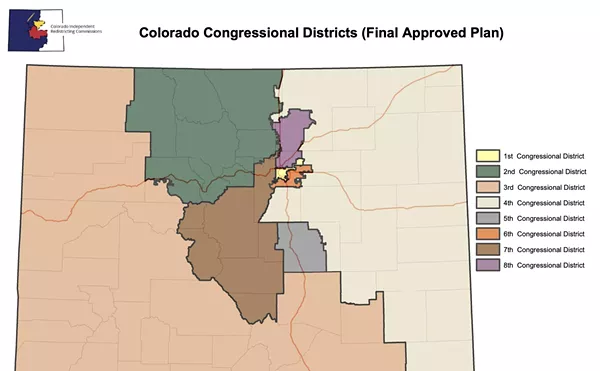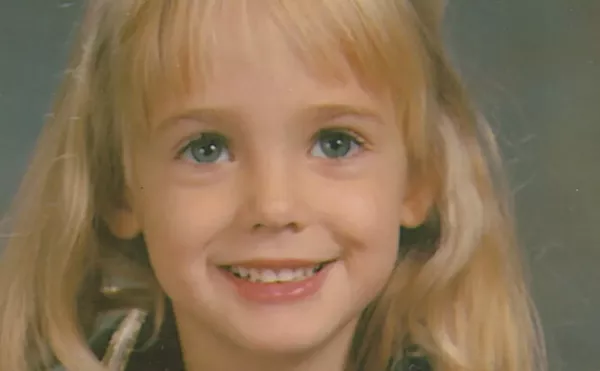Let's start with Colorado's snowpack. Sure, it's late May, and normally by now the mountain snows have all but wrapped up for their annual three-month-or-so summer hiatus. But in a typical year, snowpack hangs around well into June, and sometimes even into July and August. In southern Colorado, there's virtually no snow left, even on peaks, and farther north, there's barely a third of the snow you'd typically expect this time of year.
The drought has gotten so bad in southern Colorado that several counties have been declared disaster zones by the United States Department of Agriculture, making those areas eligible for emergency financial assistance. Conditions in the San Juan Mountains of southwest Colorado are at the highest level of drought, according to the United States' official drought monitor.

The dark red indicates the highest level of drought and covers about 8 percent of Colorado.
US Drought Monitor
The drought in the south began with an absolutely horrendous winter. Purgatory Ski Resort, near Durango in the San Juans, saw only 125 inches of snow this season, less than half of the 260 inches it averages. Telluride saw only 171 inches in the 2017-’18 winter, also only about half of the 309 inches it normally sees in a full winter. A bit farther north, Crested Butte only saw 145 inches compared to the 300 inches or so it typically sees in a winter.
Particularly for the hardest-hit areas of southern Colorado, half of the snow means half of the spring snowmelt. A quick scan through statewide stream flow levels already shows below-average water discharge through most of Colorado (there are localized exceptions), thanks to a warm May that's already melted off much of the meager snowpack.
What does this all mean? For starters, camping season is already feeling the pinch of burn bans for much of the southern half of the state. Barring big summer rains, these are unlikely to be lifted anytime soon.
The biggest concern will be the possibility for wildfires this summer. We've written extensively about the looming danger of a dry winter and how that can help fuel a nasty summer. With a quick melt and the snow water tap already running dry in much of the state, we'll need steady rain to keep the ground moist enough to avoid fires. Heat waves, such as the horrific 2012 one that helped start the Waldo Canyon Fire, and gusty, dry winds can set the stage for dangerous fire conditions.
Conditions are even nastier in southern Utah, Arizona and New Mexico. Flagstaff, Arizona, saw one of its worst winters on record, picking up just 38 inches of snow for the season, a fraction of the 101.7 inches it averages. Taos Ski Area in New Mexico saw 78 inches of snow, significantly less than the 300 inches it would see in an average year. Albuquerque already has water restrictions in place this summer.
Recent rains have helped in the Denver area and northern parts of the state. Year-to-date precipitation in Denver is around three-quarters of an inch below average, which is a deficit, but not a huge one. On the eastern plains, Akron has seen more than double its typical May rainfall, helping ease some of the worst drought conditions in Colorado's bread basket. Reservoir levels are above average, and a wet June could help ease drought conditions.
But the lack of snow in Colorado's mountains, coupled with the state's population boom, may lead to a summer with bad fires. A recent University of Colorado analysis found that 84 percent of wildfires between 1999 and 2012 were caused by humans, which means that people need to be extra careful in a potentially extra-dry summer.
Follow burn bans. Put out campfires properly. And on red flag warning days with exceptionally high fire danger, avoid anything with a spark outside (lawnmowers, parking a car off the side of a road), and properly put out cigarette butts.

